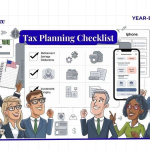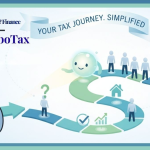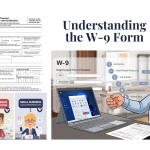Overlooked Sources of Tax-free Income
Tax-free Income: Dealing with tax rules can be confusing, and it often seems like the IRS wants part of every dollar you earn. The good news is that several types of income aren’t taxed. This means you can keep more of your hard-earned money! Let’s explore these sources of tax-free income and see how you can take advantage of them.

Read Unparallel Investment Game – Sports to Stocks: Mastering Magic Investment Strategies
1. Receiving an inheritance And Tax-free Income
Receiving an inheritance, the IRS won’t knock on your door for a share. Inheritances are generally tax-free for the recipient, regardless of the amount. It is crucial to understand the distinction between the estate tax and inheritance tax:
- Estate Tax: Paid by the estate before assets are distributed to heirs. As of 2024, estates valued at $13,610,000 or less are exempt from federal estate tax.
- Inheritance Tax: Only six states currently impose an inheritance tax, and rates vary based on the heir’s relationship to the deceased and the inherited amount.
Real-Life Example: Sarah’s grandmother passed away, leaving her $500,000 in cash and a house valued at $400,000. Despite the significant value of this inheritance, Sarah won’t owe any federal income taxes on these assets. However, if Sarah’s grandmother’s total estate was valued at $15 million. The estate would owe taxes on the amount exceeding the $13.61 million exemption before distribution to heirs.
Tips on Tax-free Income: If you inherit a retirement account like a traditional IRA, be aware that withdrawals may be subject to income tax, even though the inheritance itself isn’t taxed.
Minimize your Tax Liability – Tax Hacks: Powerful Strategies High Earners Slash Tax Bill
2. Support for the Next Generation
Child support payments are a financial lifeline for many families, and the IRS recognizes their importance by keeping its hands off. Here’s what you need to know:
- Child support is tax-free for the recipient.
- The parents paying child support cannot deduct these payments from their taxes.
- This tax treatment is different from alimony.
Real-Life Example: Mark receives $1,500 monthly in child support from his ex-spouse for their two children. Even though this adds up to $18,000 annually, Mark doesn’t report this as income on his tax return. He uses the money to pay for the children’s expenses, which doesn’t affect his tax situation.
Important Note: While child support itself isn’t taxable, any interest earned on child support payments (if invested, for example) is considered taxable income.
3. Tax-Free Income: Adoption a child
Adopting a child is a beautiful way to build a family, but it can also be expensive. Thankfully, there are tax benefits to help offset these costs:

- Employer-provided adoption assistance up to $16,810 per child (as of 2024) is non-taxable income.
- Qualified adoption expenses include:
- Adoption fees
- Court costs
- Attorney fees
- Travel expenses (including meals and lodging)
- Other expenses directly related to the legal adoption of an eligible child
Real-Life Example: The Johnsons decided to adopt a child. Their employer offers an adoption assistance program that provides $15,000 to help with the costs. The Johnsons used this money to pay for adoption agency fees, legal costs, and travel expenses related to the adoption. They don’t have to report this $15,000 as income on their tax return, effectively saving them thousands in taxes.
ExtraTip: In addition to tax-free employer assistance, you may also be eligible for the Adoption Tax Credit, which can further reduce your tax liability.
4. Workplace Injury Compensation and Tax-Free Income
If you’re receiving workers’ compensation benefits due to a job-related injury or illness. You can focus on recovery without worrying about taxes. Here’s what you should know:
- Workers’ comp benefits are generally tax-free at both the federal and state level.
- This includes payments for lost wages, medical expenses, and disability benefits.
- However, if you return to work on light duty, those wages are taxable.
Real-Life Example: Tom, a construction worker, injured his back on the job and received $30,000 in workers’ compensation benefits over a year. This amount covered his medical expenses and partially replaced his lost wages. Come tax time, Tom doesn’t need to report any of this $30,000 as income, allowing him to focus on recovery without an additional tax burden.
Watch Out: If you receive Social Security Disability Insurance (SSDI) or Supplemental Security Income (SSI) in addition to workers’ comp, a portion of those benefits might become taxable.
5. The Gift (Giving and Receiving)
Know more about Tax Free Gift – Tax on Gold: A Glittering Truth: Ultimate Guide to Gold Ownership
Financial gifts can be a welcome windfall, and in most cases, they come without tax strings attached. Here’s the breakdown:
- In 2024, you can receive up to $18,000 per person as a gift without any tax implications.
- This limit applies to the giver, not the receiver. You can receive multiple gifts of $18,000 from different people.
- Married couples can combine their gift-giving power, allowing them to give up to $36,000 to each recipient.
Real-Life Example: For their daughter’s wedding, Emily and James received several generous gifts:
- $20,000 from Emily’s parents
- $20,000 from James’s parents
- $10,000 from Emily’s grandmother
- $5,000 from a family friend
Despite receiving a total of $55,000, Emily and James don’t owe any gift tax, nor do they need to report these gifts as income. The givers also don’t owe gift tax, as each gift is within the annual exclusion limit.
Strategic Giving: For larger gifts, givers can tap into their lifetime gift tax exemption, which is $13.61 million as of 2024. This can be an effective estate planning tool for high-net-worth individuals.
6. Financial Support And Tax-free Income
The tax treatment of alimony changed significantly with the Tax Cuts and Jobs Act of 2017:

- For divorces finalized after December 31, 2018:
- Alimony received is not taxable income.
- Alimony paid is not tax-deductible.
- For divorces finalized before January 1, 2019:
- The old rules still apply: alimony is taxable for the recipient and deductible for the payer.
Real-Life Example: Lisa and Greg finalized their divorce in 2023. As part of the settlement, Greg agrees to pay Lisa $2,500 per month in alimony. Over the year, Lisa receives $30,000 in alimony payments. Because their divorce was finalized after 2018, Lisa doesn’t need to report this $30,000 as income on her tax return. Conversely, Greg can’t deduct these payments from his taxes.
Planning Tip for Tax-free Income: If you’re negotiating a divorce settlement, be aware of these tax implications as they can significantly impact the net value of alimony payments.
7. The Roth IRA Advantage of Tax-Free Income
Roth IRAs offer a unique proposition in the world of retirement savings:

- Contributions are made with after-tax dollars.
- Earnings grow tax-free.
- Qualified distributions in retirement are completely tax-free.
To make the most of this benefit:
- Ensure you meet the income limits for Roth IRA contributions.
- Consider a Roth conversion if your income is too high for direct contributions.
- Hold the account for at least five years and wait until age 59½ for tax-free withdrawals.
Real-Life Example: Mike, age 30, contributes $6,000 to his Roth IRA every year. By the time he’s 65, assuming a 7% annual return, his account could grow to over $1 million. When Mike starts withdrawing from this account in retirement, he won’t owe any taxes on the distributions, potentially saving him hundreds of thousands of dollars in taxes over his lifetime.
Long-Term Strategy: The power of tax-free growth makes Roth IRAs particularly attractive for younger investors or those who expect to be in a higher tax bracket in retirement.
8. Reaping Expenses Without the Tax Bill
Your credit card rewards are more than just perks—they’re tax-free benefits. Here’s why:
- The IRS considers most rewards as rebates on purchases, not income.
- This applies to cash back, points, and miles earned through regular spending.
- Even sign-up bonuses are generally tax-free, as long as they require you to spend a certain amount to earn them.
Real-Life Example: Jennifer uses her credit card for all her regular expenses and business travel. Over a year, she accumulates:
- $500 in cash-back rewards
- 50,000 airline miles (worth about $750 in travel)
- $250 in statement credits from using shopping portals
Despite receiving benefits worth approximately $1,500, Jennifer doesn’t need to report any of this as income on her tax return.
Exception to Note: If you earn rewards without making purchases (e.g., for opening an account), those might be considered taxable income.
9. Protection Expenses Without Taxation
Disability insurance can provide crucial financial support if you’re unable to work. The tax treatment depends on how the premiums were paid:
- Paid the premiums with after-tax dollars, the benefits are tax-free.
- Employer paid the premiums; the benefits are taxable.
- Both you and your employer split the cost; only the portion corresponding to your employer’s payments is taxable.
Real-Life Example: David pays $100 per month for a private disability insurance policy. Unfortunately, he becomes disabled and starts receiving $4,000 per month in benefits. Because David paid the premiums with after-tax dollars, this $4,000 monthly benefit is completely tax-free, providing him with more usable income during his period of disability.
Strategic Planning for Tax-free Income: Consider paying disability insurance premiums yourself to ensure tax-free benefits if you ever need to claim them.
10. Times of Crisis And Tax-free Income
When disaster strikes, every bit of assistance counts. Fortunately, qualified disaster relief payments are tax-free. This includes:
- Payments received from the Federal Emergency Management Agency (FEMA)
- State and local government disaster assistance
- Qualified disaster relief payments from employers
Real-Life Example: After a severe hurricane, the Smith family receives:
- $5,000 from FEMA for temporary housing
- $3,000 from their state’s disaster relief fund for essential personal property replacement
- $2,000 from their employer to help with immediate needs
The Smiths can use this $10,000 to recover from the disaster without owing any taxes on the assistance received.
Key Point: To be tax-free income, these payments must be for expenses not covered by insurance.
11. Investing in Education
Employer-provided education assistance is a valuable benefit that’s often overlooked:

- Up to $5,250 per year in educational assistance can be excluded from your taxable income.
- This applies to undergraduate and graduate-level courses.
- The benefit can cover tuition, fees, books, supplies, and equipment.
Real-Life Example: Rachel’s employer offers an education assistance program. She uses it to take graduate-level courses in data science, relevant to her career. Her employer pays $5,000 directly to the university for Rachel’s tuition and books. This $5,000 isn’t reported as income on Rachel’s W-2, saving her approximately $1,100 in federal taxes (assuming a 22% tax bracket).
Maximizing the Benefit: If your employer offers this program, consider how you can use it to advance your career or pursue personal interests without increasing your tax burden.
12. The Scholarship’s Tax-Free Income
Academic scholarships and fellowships can be entirely tax-free under certain conditions:

- You must be a degree candidate at an eligible educational institution.
- The funds must be used for qualified expenses: tuition, fees, books, supplies, and required equipment.
- Any portion used for room and board, travel, or optional equipment is taxable.
Real-Life Example: Jason receives a $20,000 scholarship to attend college. The scholarship breaks down as follows:
- $15,000 for tuition and fees
- $3,000 for required books and supplies
- $2,000 for room and board
Jason doesn’t need to report the $18,000 used for tuition, fees, books, and supplies as taxable income. However, the $2,000 used for room and board is taxable.
Scholarship Strategy: If you have both scholarship funds and personal funds, use the scholarship money for qualified expenses first to maximize the tax-free benefit.
13. Life Insurance: A Tax-Free Income
Life insurance payouts are designed to provide financial security to beneficiaries, and the tax code supports this goal:

- Death benefits paid as a lump sum are generally income tax-free to the beneficiary.
- This applies regardless of the policy size or the relationship between the insured and the beneficiary.
Real-Life Example: Maria’s husband passed away, leaving her a $500,000 life insurance payout. Despite this substantial sum, Maria doesn’t owe any income taxes on this money. She can use the full amount to pay off their mortgage, set aside money for their children’s education, and invest for her future without any tax implications.
Estate Planning Consideration: While beneficiaries don’t pay income tax on life insurance proceeds, these payouts may be subject to estate tax if the insured had any “incidents of ownership” in the policy.
14. Health Savings Accounts: Triple Tax-Free Income Advantage
Health Savings Accounts (HSAs) offer a unique triple tax benefit:

- Contributions are tax-deductible (or pre-tax if made through payroll deduction).
- Earnings grow tax-free.
- Withdrawals for qualified medical expenses are tax-free.
To maximize your HSA for Tax-free Income:
- Contribute the maximum allowed ($3,850 for individuals, $7,750 for families in 2024, plus $1,000 catch-up for those 55 and older).
- Consider paying medical expenses out-of-pocket and letting your HSA grow for future use.
- After age 65, you can withdraw funds for non-medical expenses without penalty (though you’ll pay income tax on these withdrawals).
Real-Life Example: The Wilson family contributes $7,750 (the 2024 family maximum) to their HSA. They’re in the 24% tax bracket, so this contribution saves them $1,860 in federal income taxes. They invest the HSA funds, and over 20 years, it grows to $50,000. When they withdraw this money for qualified medical expenses in retirement, they pay zero taxes on the withdrawal, having never paid taxes on the contributions or growth.
Tax Planning Makes You Rich – Tax Strategies of the Wealthy: Insights from a Top Tax Expert
Conclusion of Tax-Free Income
Understanding these tax-free income sources can significantly impact your financial planning and potentially keep more money in your pocket. However, tax laws are complex and subject to change. While these income sources are generally tax-free, there may be specific conditions or limitations that apply to your unique situation.
It’s always wise to consult with a qualified tax professional or financial advisor to ensure you’re maximizing these opportunities while staying compliant with current regulations. They can help you navigate the nuances of tax law and develop strategies to optimize your financial position.
Remember, effective tax planning is an ongoing process. Stay informed about changes in tax laws, reassess your financial situation regularly, and don’t hesitate to seek expert advice. By doing so, you’ll be well-positioned to take advantage of these tax-free income opportunities and build a stronger financial future.
These real-life examples demonstrate how understanding and leveraging tax-free income sources can significantly impact your financial health. Whether it’s making the most of employer benefits, strategically planning major life events, or simply being aware of the tax implications of various income sources, this knowledge can help you keep more of your hard-earned money.
Remember, while these examples illustrate how these tax-free income sources work, individual situations can vary greatly. Tax laws are complex and subject to change, so it’s always advisable to consult with a qualified tax professional or financial advisor to understand how these concepts apply to your specific circumstances.
Thank you for reading this post, don't forget to subscribe!






